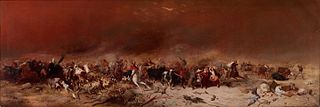 W
WThe Chiko Roll is an Australian savoury snack invented by Frank McEncroe, inspired by the Chinese spring roll and first sold in 1951 as the "Chicken Roll" despite not actually containing chicken. The snack was designed to be easily eaten on the move without a plate or cutlery. Since 1995, Chiko Rolls have been made by Simplot Australia.
 W
WChinatowns in Australia is a term used to describe major Chinese ethnic enclaves in Australia, especially those that claim to retain a strong Chinese cultural identity and a strong relationship with China. Chinatowns exist in most Australian states and territories, especially in the highly-populous and cosmopolitan capital cities but also in rural areas. Many large present-day Chinatowns in Australia have developed out of smaller historical Chinese settlements in Australia dating back to the 19th century. Chinese people first immigrated to Australia in large waves in the midst of the Australian gold rushes. Many of these people subsequently chose to return to China or were forcefully deported from Australia. The first known Chinese Australian was John Shying, who immigrated to Australia in 1818.
 W
WThe Chinese Museum or Museum of Chinese Australian History is an Australian history museum located in Melbourne's Chinatown. The museum was established in 1985 with a charter to present the history of Australians of Chinese ancestry. An extensive refurbishment funded by the Victorian Government was completed in 2010. Since then, the museum has also acted as a Chinatown Visitor Centre.
 W
WChinese New Year, Spring Festival or the Lunar New Year, is the festival that celebrates the beginning of a new year on the traditional lunisolar Chinese calendar. In Chinese culture and Asian countries within Sinosphere, the festival is also commonly referred to as Spring Festival as the spring season in the lunisolar calendar traditionally starts with lichun, the first of the twenty-four solar terms which the festival celebrates around the time of the Lunar New Year. Marking the end of winter and the beginning of the spring season, observances traditionally take place from New Year’s Eve, the evening preceding the first day of the year to the Lantern Festival, held on the 15th day of the year. The first day of Chinese New Year begins on the new moon that appears between 21 January and 20 February.
 W
WAt the beginning of the 21st century, Chinese restaurants have been present in a significant majority of Australian cities and towns for over fifty years, and in many places for over one hundred and fifty years.
 W
WChinese Temple and Settlement Site is a heritage-listed temple off Gulf Developmental Road, Croydon, Shire of Croydon, Queensland, Australia. It was built circa 1880s. It was added to the Queensland Heritage Register on 28 July 2000.
 W
WA dim sim is a Chinese-inspired meat and vegetable dumpling-style snack food, popular in Australia and to a lesser extent in New Zealand. It was originally offered to miners in the goldfields of Australia in the 1800s and used mutton as its primary meat. It was popularized by a Chinese immigrant in Melbourne who originally came from Guangdong, William Chen Wing Young, the father of Australian celebrity chef, author and TV personality Elizabeth Chong. The name derives from the pronunciation diim syiim (點心) in Toisanese, the predominant dialect spoken at the time by central Melbourne's Chinese community.
 W
WThe Golden Dragon Museum is situated in the city of Bendigo, Victoria, Australia. The museum is dedicated to the culture and history of Chinese Australians, particularly in the region. Built on the historical site of one of Bendigo's Chinatowns, the museum's precinct also includes Chinese Gardens and a temple to Kuan Yin. Through the museum accreditation program, it was the first accredited museum in Victoria.
 W
WThe history of Chinese Australians possibly predates the arrival of James Cook in the eighteenth century. Chinese Australians are the oldest continuous immigrant group to Australia after those from the British Isles. Significant Chinese emigration only began in earnest after the discovery of gold and the subsequent gold rushes in Australia. This migration shaped and influenced Australian policies on immigration for over a century. Despite facing societal discrimination and restrictive immigration policies, Australians of Chinese descent have made a substantial contribution to the culture and history of the country.
 W
WThe Holy Triad Temple is a heritage-listed temple at 32 Higgs Street, Albion, City of Brisbane, Queensland, Australia. It was built from 1885 to 1886. It is also known as Breakfast Creek Joss House and Sarm Sung Goon. It was added to the Queensland Heritage Register on 21 October 1992.
 W
WThe Hou Wang Temple is a heritage-listed former temple and now museum at Herberton Road, Atherton, Tablelands Region, Queensland, Australia. Built in 1903, it is one of the oldest original Chinese temples in Australasia. It is also known as Hou Wang Miau, Atherton Joss House and Atherton Chinese Temple.
 W
WTVB Jadeworld was a broadcasting station based in Sydney, Australia that caters for the Chinese community in Australia. It currently consists of 16 channels, with many programs relayed from TVB operations in Hong Kong and Taiwan.
 W
WSameway Magazine is a Chinese-language fortnightly tabloid-format newspaper published in Melbourne in Victoria (Australia).
 W
WWong Shee Ping, 黃樹屏, also known as Wong Yau Kung 黃右公/黃又公, was a Chinese writer, newspaper editor, political activist and Christian preacher. Born in the county of Kaiping in the southern Chinese province of Guangdong, as a young man he moved to Melbourne, Australia, where his family had business interests. He was active in the Chinese-Australian community as a preacher and Kuomintang organiser, became editor of the Chinese Times newspaper, and wrote the first known novel by a Chinese-Australian author, The Poison of Polygamy (1909-1910). He returned to China in 1924, where he served in various posts in Sun Yatsen's government of the Republic of China.
 W
W